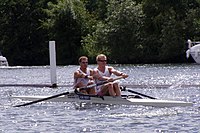
Eights Week, also known as Summer Eights, is a four-day regatta of bumps races which constitutes the University of Oxford's main intercollegiate rowing event of the year. The regatta takes place in May of each year, from the Wednesday to the Saturday of the fifth week of Trinity Term. Men's and women's eights compete in separate divisions for their colleges.

The First and Third Trinity Boat Club is the rowing club of Trinity College in Cambridge, England. The club formally came into existence in 1946 when the First Trinity Boat Club and the Third Trinity Boat Club merged, although the two clubs had been rowing together for several years before that date. The first boat club associated with Trinity was formed in 1825 and came to be known as First Trinity in 1833 when the Third Trinity Boat Club was formed. Membership of Third Trinity was originally confined to Old Etonians and Old Westminsters. Members of Third Trinity were allowed also to be members of First or Second Trinity and often were.

Torpids is one of two series of bumping races, a type of rowing race, held yearly at Oxford University; the other is Eights Week. Over 130 men's and women's crews race for their colleges in six men's divisions and five women's; almost 1,200 participants in total. The racing takes place on the Isis, usually in the 7th week of Hilary Term on four successive days from Wednesday to Saturday.

The Lady Margaret Boat Club is the rowing club for members of St John's College, Cambridge, England. The club is named after Lady Margaret Beaufort, founder of the College.
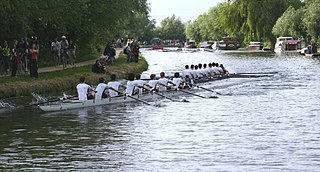
The May Bumps are a set of rowing races, held annually on the River Cam in Cambridge, England. They began in 1887 after separating from the Lent Bumps, the equivalent bumping races held at the end of February or start of March. Prior to the separation there had been a single set of annual bumps dating from its inception in 1827. The races are open to all college boat clubs from the University of Cambridge, the University Medical and Veterinary Schools and the Anglia Ruskin Boat Club. The May Bumps takes place over four days in mid-June and is run as a bumps race.
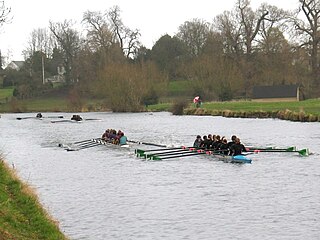
The Lent Bumps are a set of rowing races held annually on the River Cam in Cambridge. They began in 1887, after separating from the May Bumps, which are bumping races held in mid-June. Prior to the separation there had been a single set of annual bumps dating from its inception in 1827. The races are open to all college boat clubs from the University of Cambridge, the University Medical and Veterinary Schools and Anglia Ruskin Boat Club. The Lent Bumps take place over five days at the end of February / start of March and are run as bumps races.
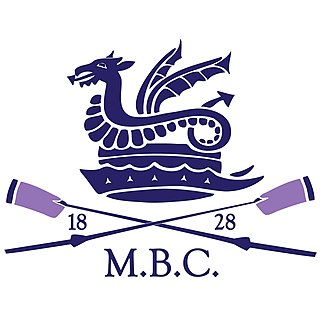
Magdalene Boat Club (MBC) is the rowing club for members of Magdalene College, Cambridge. The foundation of the MBC in 1828 coincided with the 400th anniversary of the Monk's Hostel or Buckingham College - the original foundation of Magdalene.

Cambridge University Women's Boat Club (CUWBC) was the rowing club for women at the University of Cambridge. CUWBC fielded both a lightweight eight that races against Oxford at the Henley Boat Races, and two openweight eights that race at the Women's Boat Race. In April 2020 it was agreed that the club would be combined with the men's club CUBC and the lightweight men's club CULRC.
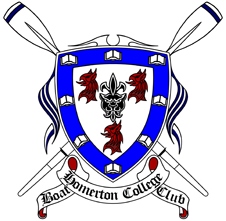
Homerton College Boat Club (HCBC) is the rowing club for members of Homerton College, University of Cambridge. HCBC colours are navy blue with white trim, and HCBC boats can be identified by white blades with a single navy blue stripe towards the tip of the spoon.
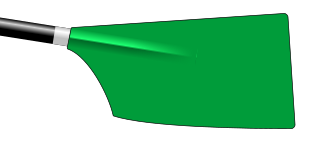
Jesus College Boat Club is a rowing club for members of Jesus College, Oxford, one of the constituent colleges of the University of Oxford. The club was formed in 1835, but rowing at the college predates the club's foundation: a boat from the college was involved in the earliest recorded races between college crews at Oxford in 1815, when it competed against Brasenose College. In the early years of rowing at Oxford, Jesus was one of the few colleges that participated in races. Neither the men's nor the women's 1st VIIIs have earned the title of "Head of the River", which is gained by winning Eights Week—the main inter-college rowing competition at Oxford.

Brasenose College Boat Club (BNCBC) is the rowing club of Brasenose College, Oxford, in Oxford, England. It is one of the oldest boat clubs in the world, having beaten Jesus College Boat Club in the first modern rowing race, held at Oxford in 1815. Although rowing at schools such as Eton and Westminster School Boat Club predates this, the 1815 contest is the first recorded race between rowing clubs anywhere in the world.

Balliol College Boat Club (BCBC) is the rowing club for members of Balliol College, Oxford, England. It is one of the college boat clubs at the University of Oxford.

The Queen's College Boat Club is the rowing club for members of The Queen's College, Oxford. It is one of the oldest boat clubs in the world, having been founded in 1827.

St Edmund Hall Boat Club is a rowing club for members of St Edmund Hall, Oxford. It is based in its own boathouse on the Isis.

Wadham College Boat Club (WCBC) is the rowing club of Wadham College, Oxford, in Oxford, United Kingdom. The club's members are students and staff from Wadham College and Harris Manchester College. Founded circa. 1837, Wadham has had success both within Oxford and externally in regattas such as Henley Royal Regatta.
The May Bumps 2010 were a set of rowing races held in Cambridge, UK with crews from the boat clubs of all Cambridge University Colleges, the University Medical and Veterinary Schools and Anglia Ruskin University from Wednesday 9 June 2010 to Saturday 12 June 2010. The event was run as a bumps race and was the 119th set of races in the series of May Bumps which have been held annually in mid-June in this form since 1887. In 2010, a total of 172 crews took part, with nearly 1550 participants in total.
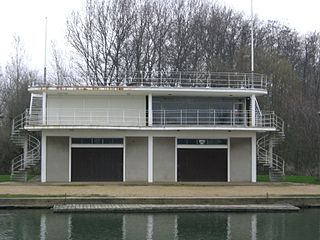
Keble College Boat Club (KCBC) is the rowing club of Keble College, in Oxford, United Kingdom. The boat club is based in its boathouse on the Isis, which is shared with Jesus College. Most of the year is spent training at the boat club's second facility at the Godstow stretch to the North.

Regent's Park College Boat Club is the boat club of Regent's Park College, Oxford, a permanent private hall of the University of Oxford. It is based in New College Boat House which it shares with New College Boat Club.

St Peter's College Boat Club (SPCBC) is the rowing club for members of St Peter's College, Oxford. Founded in 1929, it is now based in the University College Boathouse on the southern bank of The Isis. The Boat Club competes in Torpids and Summer Eights bumps races in Oxford.
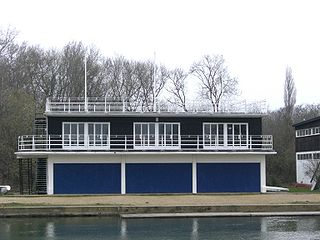
Oriel College Boat Club (OCBC) is the rowing club of Oriel College, Oxford. Rowing at Oriel is carried out from the college's own boathouse across Christ Church Meadow, on Boat House Island.

























